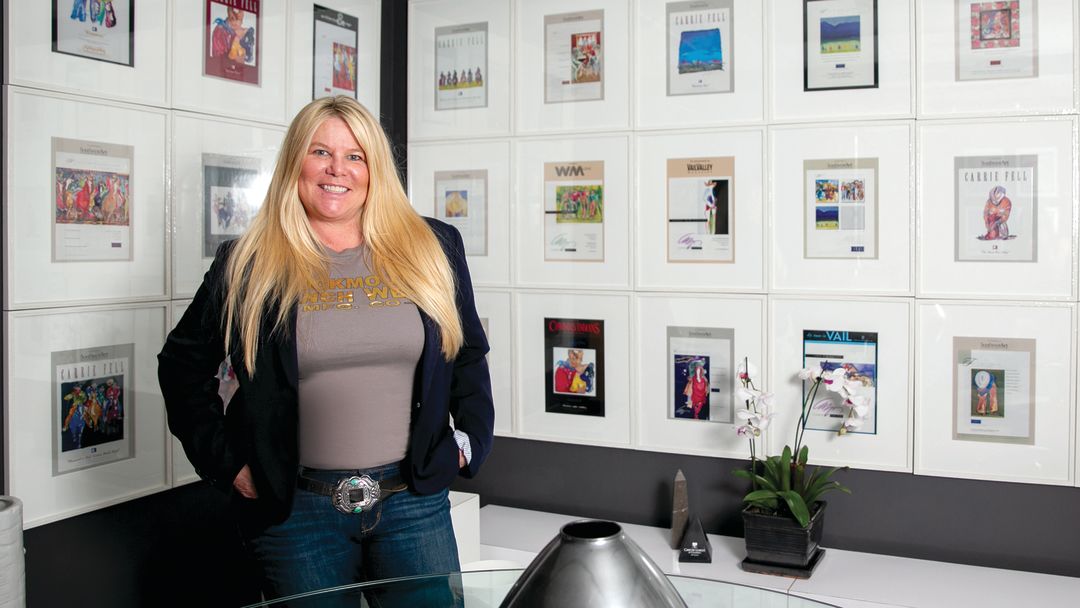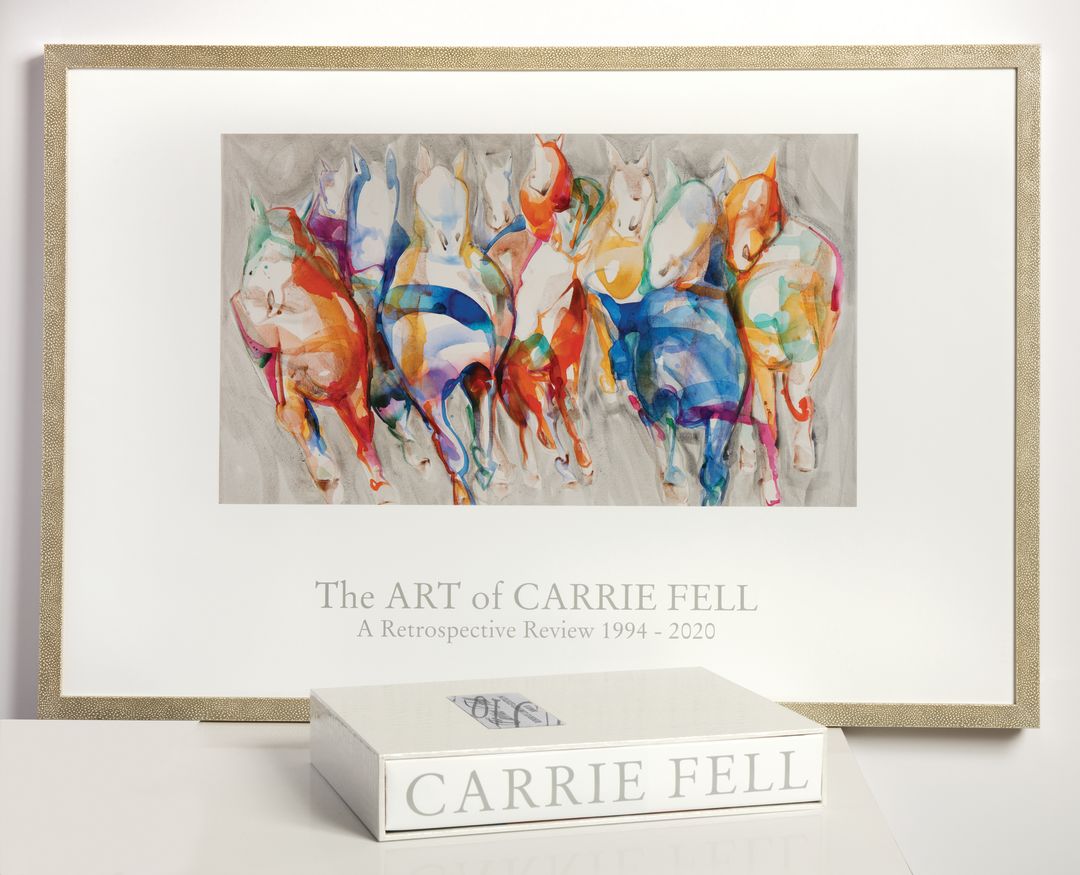Carrie Fell: Work in Progress

Carrie Fell in her Centennial studio space.
Image: Dominique Taylor
If you spent any time in Vail between 2004 and 2015, you likely dined at Restaurant Kelly Liken. In its day, the high-end, farm-to-table destination in the Gateway Building just off the Main Vail roundabout rivaled, if not surpassed, Sweet Basil as the village’s must-get reservation. And if you got a booking, you probably came face to face with at least one of then-It-artist Carrie Fell’s iconic cowboy paintings. Most diners remember True West, a mesmerizing scene of a cowboy in momentary repose, contemplating the scarlet red of a setting sun.
Even if you didn’t dine at Kelly Liken, you might still recall Fell’s signature work as the official artist of the 2015 FIS Alpine World Ski Championships. Effective Edge, her vibrant oil and acrylic swirl of a skier carving through a GS turn, was the iconic image that landed on bus wraps, flyers, and posters advertising an event that drew a quarter-million spectators to the valley.
For the entirety of that decade, Fell was the Vail art scene’s golden girl. Her watery, free-flowing cowboys were engaging, rugged, familiar—compositions as promising as Western open space, harnessing so much raw movement you felt like you were along for the ride. Fell credits that immersive experience to her unconventional technique of messily using her fingers and hands as brushes, channeling the utter abandon of her inner kindergartner in the act of creation. Western collectors love her and still clamor for her work long after she closed her eponymous gallery at the Solaris in 2015. So, where, seven years and a pandemic later, is Fell now?
Most days, she’s cloistered in her studio in an office park off Interstate 25 in Centennial. For one thing, while the West will always be Fell’s creative stomping ground, she’s reaching beyond the muse that catapulted her early career. “The cowboys and Colorado will always be a part of me, but there’s another side of Carrie Fell that I want to explore,” she says. But first, she had a book to write.

Carrie Fell’s retrospective coffee table book ($350, above) can be found locally at The Bookworm of Edwards, bookwormofedwards.com.
Image: COURTESY BRIAN BIRLAUF
The Art of Carrie Fell and the Chronicles of Ruby Copper: A Retrospective Review 1994-2020, a 560-page coffee table book, chronicles the trajectory of her artistic career to its present shifting point (Ruby Copper references a fictional character/muse that Fell dialogues with in her daily journals). “The book, to me, it closed a chapter of 25 years and opened a new face of the business,” she says. “It felt good to say, let’s see, what’s next?”
So, what is next? Fell is galloping toward a new creative landscape, trading the masculine figure of the cowboy for the feminine form—strong, elegantly garbed women gazing off the canvas with commanding, almost defiant visages; nostalgic fashion plates from the 1950s and ’60s colliding with present-day sensibilities. “I’m trying to romance new collectors through new transitional artwork that might not be so Western but is still part of me,” she explains. “These are modern, social pieces where I use [digital] backgrounds that I create and fine-tune in Photoshop, like wall coverings.” (For a preview, check out the placeholder page of her under-development website, carriefell.com, where a sunset of color leaps from the screen.)
Embracing new technology, Fell is also experimenting with the world of non-fungible tokens (NFTs), where fully digital pieces of art are owned, exhibited, and traded in the digisphere via blockchain. “I’m speaking to a younger buyer, not their parents. They’re ridding themselves of things, they’re more interested in experiences and in the absence of caring for, storing art, and moving art,” she adds. “They can take digital art anywhere and enjoy it wherever they are.” The move from the tried-and-true, languid world of the cowboy to the fast-moving digital space might give some collectors pause, but Fell doesn’t see it that way. This expansion of her work has allowed her to breathe her talent into new spaces. “I don’t feel I’ve stepped out of place but have shifted positions,” she says.
Which explains the unconventional image she chose for the cover of her new book: an unfinished painting, reflecting an unfinished, ever-evolving creative life. Carrie Fell’s artwork is on display and for sale at Gallery Züger at the Solaris.






































